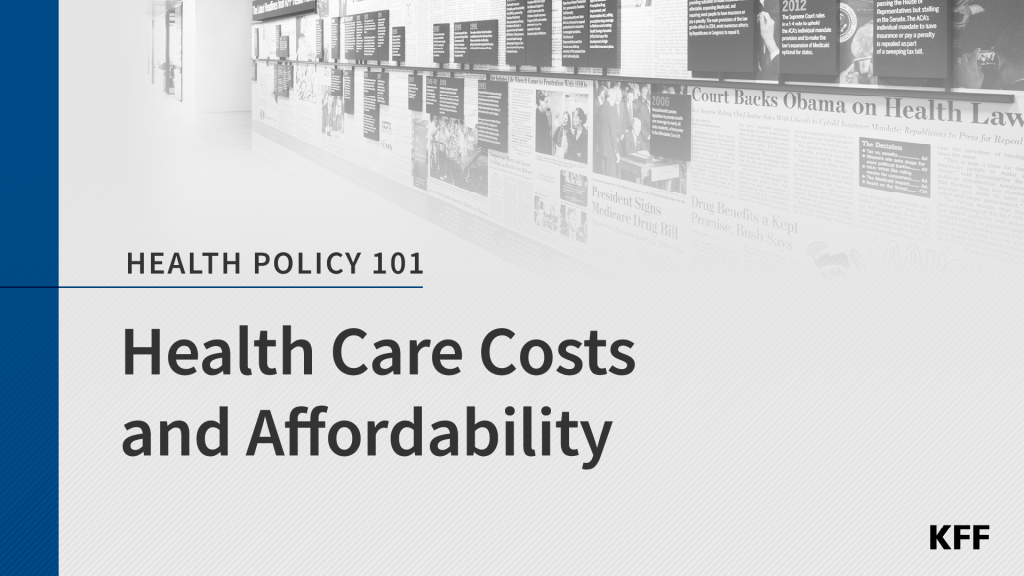50 Million Uninsured: The Faces Behind the Headlines
Almost 50 million Americans lacked health insurance in 2010 -- about a million more than in 2009.
The independent source for health policy research, polling, and news.
KFF’s policy research provides facts and analysis on a wide range of policy issues and public programs.
KFF designs, conducts and analyzes original public opinion and survey research on Americans’ attitudes, knowledge, and experiences with the health care system to help amplify the public’s voice in major national debates.
KFF Health News is a national newsroom that produces in-depth journalism about health issues and is one of the organization’s core operating programs.
Health Policy 101 is a comprehensive guide covering fundamental aspects of U.S. health policy and programs, including Medicare, Medicaid, the Affordable Care Act, employer-sponsored insurance, the uninsured population, health care costs and affordability, women's health issues, and health care politics. The Health Care Costs and Affordability chapter explores trends in health care costs in the U.S. and the factors that contribute to this spending. It also examines how health care spending varies across the population, the impact of costs on care affordability and individuals' overall financial vulnerability.
Almost 50 million Americans lacked health insurance in 2010 -- about a million more than in 2009.
On February 15, the Kaiser Family Foundation hosted an event featuring a PBS documentary with former Washington Post correspondent T.R.
As Congress and other policymakers weigh potentially major changes to the Medicare program as part of the deficit-reduction debate, this Kaiser Family Foundation report highlights the role Medicare now plays in the lives of beneficiaries and the challenges many face in paying for their health care and other living expenses on a fixed budget.
03/05/10 Engaging consumers more directly in their care may improve health outcomes and help control the costs of care. This briefing, cosponsored by the Alliance for Health Reform and the AARP Public Policy Institute, focused on the potential for changing consumer behavior to promote the use of effective interventions and discourage unnecessary care.
The Alliance for Health Reform and the Kaiser Family Foundation discuss the recent Supreme Court ruling on the constitutionality of the health reform law.
In this JAMA Viewpoints column, KFF's Drew Altman, Ashley Kirzinger and Mollyann Brodie explore the power of health care affordability as an economic issue, how it has played out in recent election cycles, and the implications for the 2026 midterm elections.
This Health Policy 101 chapter provides an overview of the Affordable Care Act (ACA), a major reform of the U.S. health care system aimed at reducing high uninsured rates and alleviating issues like high out-of-pocket costs and coverage exclusions for preexisting conditions. The ACA significantly altered many aspects of the health system and the chapter explores its mechanisms, such as the Health Insurance Marketplaces, and the evolution of the law since its passage in 2010 to the changes in the 2025 budget reconciliation law.
This survey explores how ACA Marketplace enrollees expect to respond if their premium payments doubled as expected in 2026 when enhanced premium tax credits are set to expire. About a third would very likely look for a lower-cost plan, even if it had higher deductibles, and about a quarter would very likely end up uninsured. The survey also examines how increased health care costs may affect their finances and the potential impact in next year's elections.
If the amount they pay in premiums doubled, about one in three enrollees in Affordable Care Act Marketplace health plans say they would be “very likely” to look for a lower-premium Marketplace plan (with higher deductibles and co-pays) and one in four would “very likely” go without insurance next year, finds a new survey of…
Under the Patient Protection and Affordable Care Act (PPACA), insurance plans offered through state insurance exchanges as well as non-grandfathered plans offered in the individual and small group markets - will be required to cover a set of health benefits and services called the "essential health benefits" package.
© 2025 KFF
